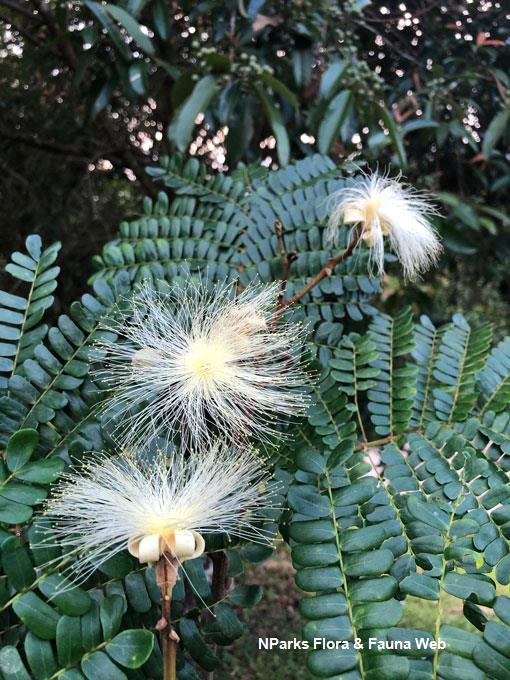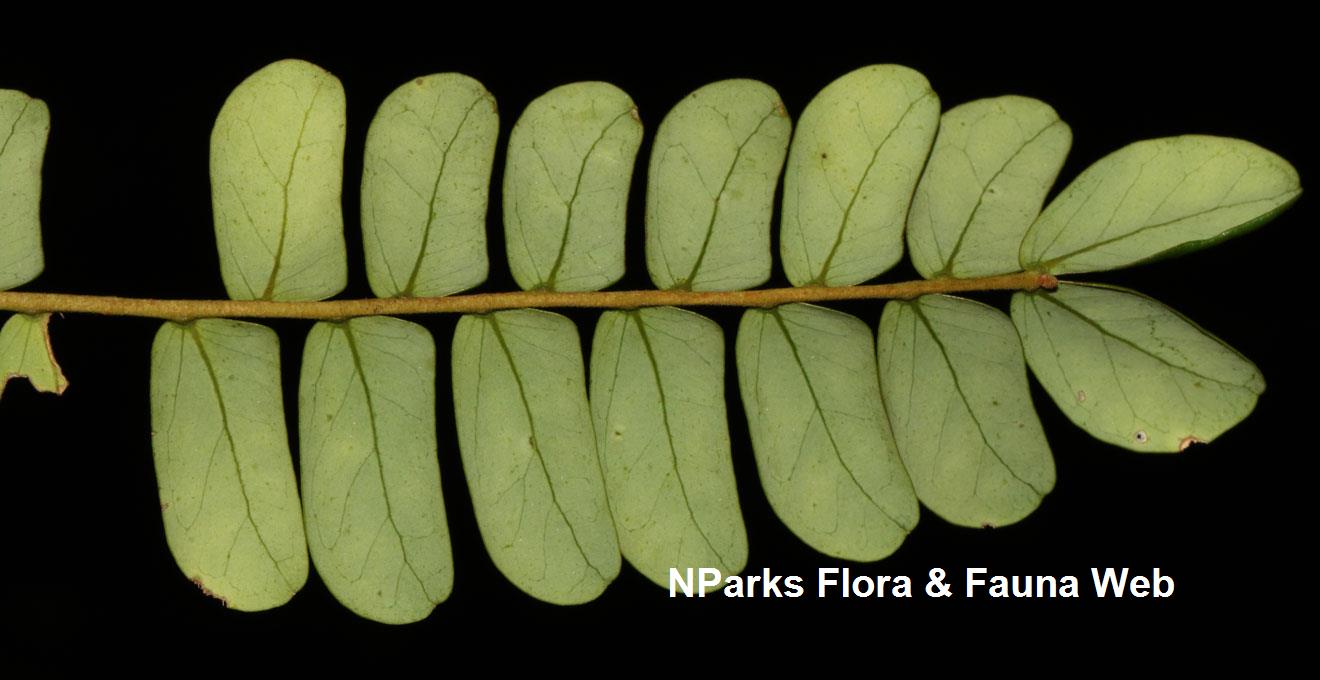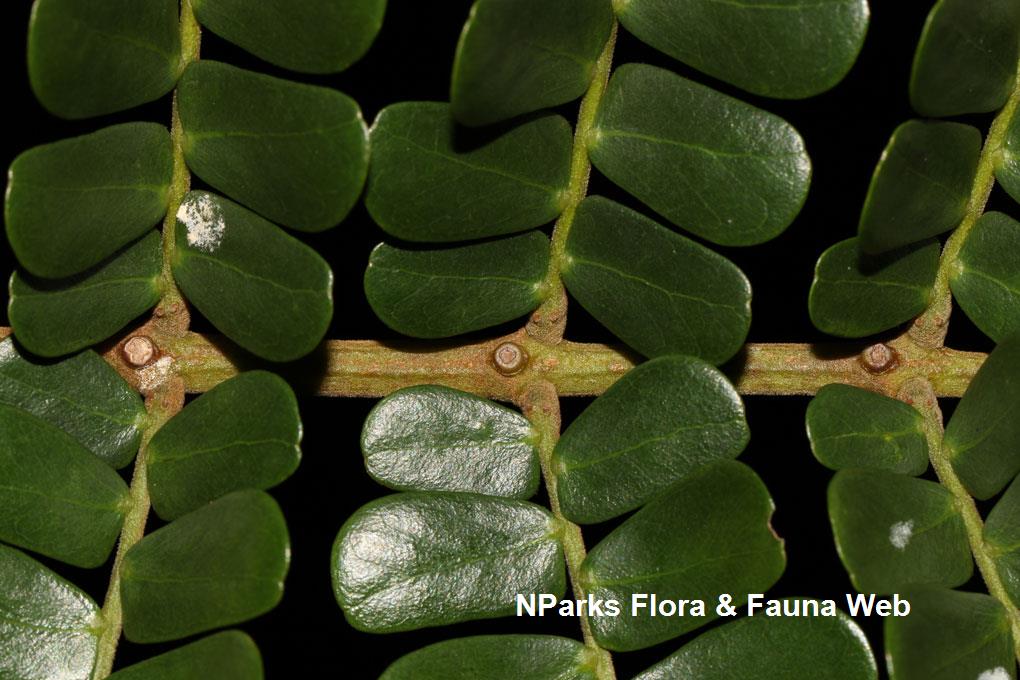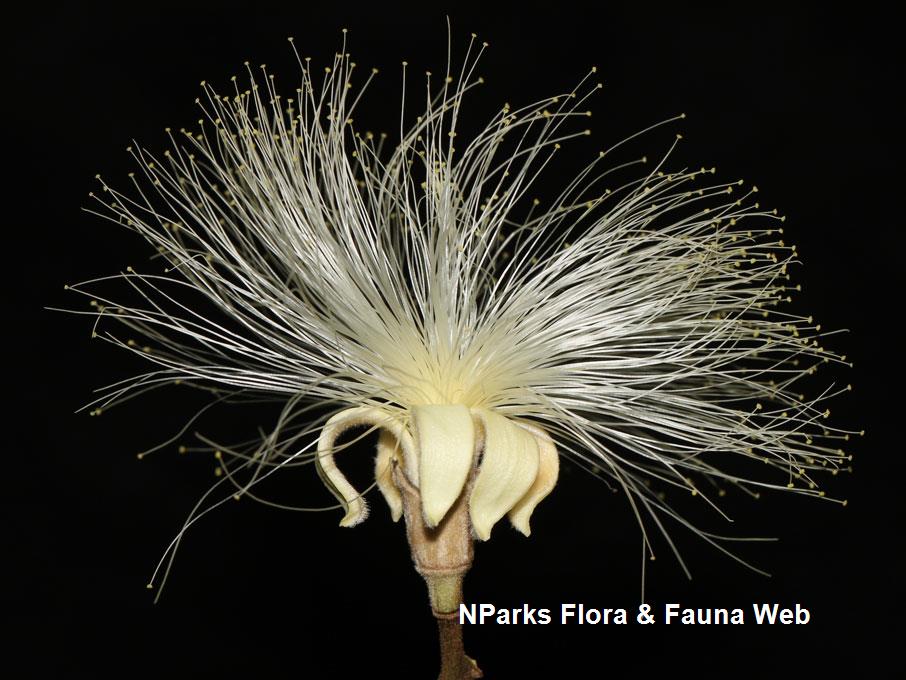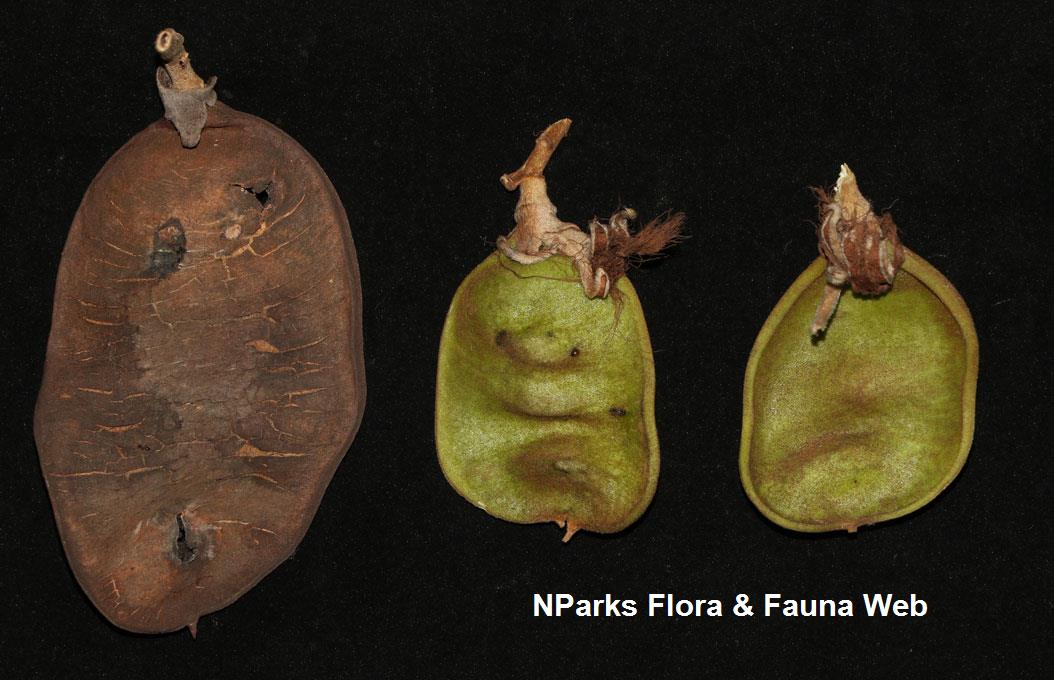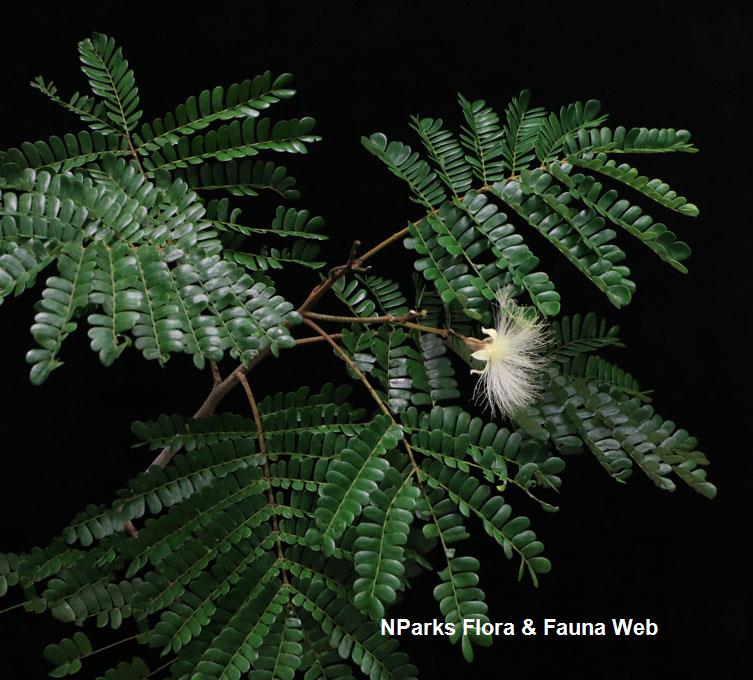
Back
Serianthes grandiflora Benth.
| Family Name: | Fabaceae (Leguminosae) |
Serianthes grandiflora is a large-sized tree that grows to 35 m in height. It has bipinnate leaves with 7 - 10 pairs of leaflets. Leaflets are further divided into 6 - 18 pairs of smaller leaflets. Flowers are held on an inflorescence, they are yellow to yellow-brown, woolly, with numerous cream-white stamens untied at the base. The fruit is an oblong, black, woody indehiscent seed pod with a flaky exterior, dispersed by water.
Name
Classifications and Characteristics
| Plant Division | Angiosperms (Flowering Seed Plants) (Dicotyledon) |
|---|---|
| Plant Growth Form | Tree (Big (>30m)) |
| Maximum Height | 35 m |
Biogeography
| Native Distribution | South Thailand, Peninsular Malaysia, Sumatra, Java, Philippines, Borneo, Celebes, Moluccas, New Guinea, Manus Island |
|---|---|
| Native Habitat | |
| Preferred Climate Zone | Tropical |
| Local Conservation Status | Native to Singapore (Critically Endangered (CR)) |
Description and Ethnobotany
| Growth Form | It is a large-sized tree that can grow to 35 m tall. |
|---|---|
| Foliage | Leaves are bipinnate, held on a petiole 4.5 - 10 cm long with a gland near its base. Each leaf has 7 - 10 pairs of leaflets, the leaflet divides further into 6 - 18 pairs of smaller leaflets alternately arranged. The ultimate leaflets are box-like, triangular-oblong, measuring 8 - 29 mm long by 6 - 13 mm wide. Glands are found at the petioles and leaf stalks. |
| Flowers | Flowers are borne on an inflorescence covered in fine hairs, up to 16 cm long. The flowers are yellow to yellow-brown, funnel-shaped, woolly, with numerous cream-white stamens united at the tube. |
| Fruit | The fruit is a dry, woody, black seed pod which does not split upon maturity. The oblong-shaped pod occasionally appears slightly twisted, measures 5.5 - 18 cm long by 3.8 - 5.8 cm wide. The seeds are elliptic, 12.5 - 14.5 mm long, 6 - 7.5 mm wide. |
| Habitat | Occurs mostly along seashores, sandy areas behind the mangroves, near river mouths. <1> |
| Cultivation | It can be propagated by seed. |
Fauna, Pollination and Dispersal
| Pollination Method(s) | Abiotic (Water) |
|---|
Plant Care and Propagation
| Light Preference | Full Sun |
|---|---|
| Water Preference | Moderate Water |
| Plant Growth Rate | Moderate to Slow |
| Rootzone Tolerance | Well-Drained Soils, Fertile Loamy Soils |
| Propagation Method | Seed |
Foliar
| Foliage Retention | Evergreen |
|---|---|
| Mature Foliage Texture(s) | Glossy / Shiny |
| Foliar Type | Compound (Bipinnate) |
| Foliar Arrangement Along Stem | Alternate |
| Foliar Attachment to Stem | Petiolate |
| Foliar Shape(s) | |
| Foliar Venation | Reticulate |
| Foliar Margin | Entire |
| Foliar Apex - Tip | Emarginate, Rounded |
| Foliar Base | Truncate / Square |
Non - Foliar and Storage
| Stem Type & Modification | Woody |
|---|
Floral (Angiosperm)
| Flower & Plant Sexuality | Bisexual Flowers , Bisexual Flowers |
| Flower Colour(s) | Yellow / Golden, Brown |
|---|
| Flower Texture(s) | Velvety / Furry / Tomentose |
| Flower Grouping | Cluster / Inflorescence |
| Flower Symmetry | Radial |
| Inflorescence Type | Raceme |
| Flowering Habit | Polycarpic |
Fruit, Seed and Spore
| Mature Fruit Colour(s) | Brown |
|---|---|
| Fruit Classification | Simple Fruit |
| Fruit Type | Indehiscent Dry Fruit , Pod |
References
| References | <1> Nielsen, I.C. (1992). Serianthes. In: Nielsen, I.C. & Hopkins, H.C.F. (eds). Flora Malesiana, ser. 1. Seed Plants, vol. 11, pt. 1, pp. 164. Leiden: Rijksherbarium. |
|---|
Image Repository
Others
| Master ID | 30388 |
|---|---|
| Species ID | 4697 |
| Flora Disclaimer | The information in this website has been compiled from reliable sources, such as reference works on medicinal plants. It is not a substitute for medical advice or treatment and NParks does not purport to provide any medical advice. Readers should always consult his/her physician before using or consuming a plant for medicinal purposes. |

